The History of Assassination Attempts on U.S. Presidents, Including Ronald Reagan’s Near-Fatal Bullet Wound in 1981
- Oops!Something went wrong.Please try again later.
- Oops!Something went wrong.Please try again later.
- Oops!Something went wrong.Please try again later.
- Oops!Something went wrong.Please try again later.
- Oops!Something went wrong.Please try again later.
- Oops!Something went wrong.Please try again later.
- Oops!Something went wrong.Please try again later.
- Oops!Something went wrong.Please try again later.
Since the United States’ founding, four sitting presidents have been assassinated and several others have survived assassination attempts
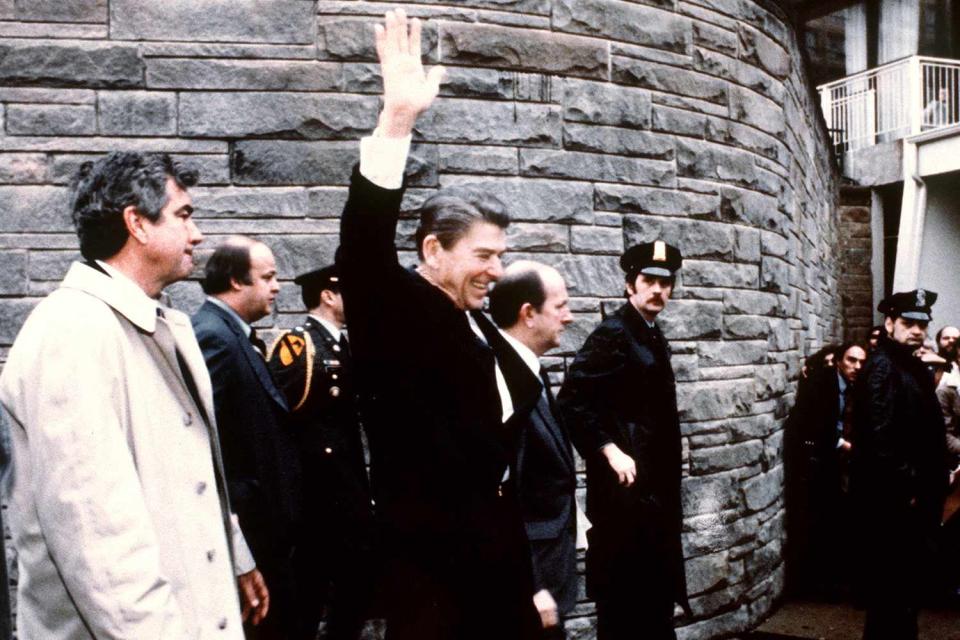
MIKE EVENS/CONSOLIDATED NEWS PICTURES/AFP via Getty
President Ronald Reagan waves to a Washington, D.C., crowd moments before being shot in the chest on March 30, 1981Since the United States’ founding, four sitting presidents have been assassinated: Abraham Lincoln in 1865, James A. Garfield in 1881, William McKinley in 1901 and, most recently, John F. Kennedy in 1963.
But many other presidents have survived assassination attempts — most recently former President Donald Trump, who was shot in the ear at a campaign rally in Pennsylvania on July 13, 2024, while campaigning for a second term in the White House.
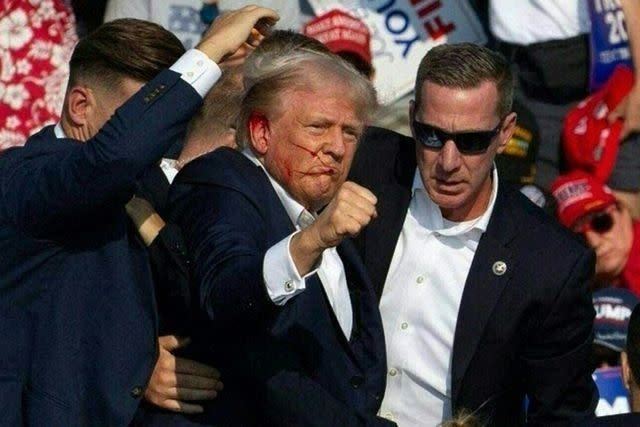
REBECCA DROKE/AFP via Getty
Countless presidential assassinations have been prevented through the work of the federal government and Secret Service agents, but every so often somebody slips through the cracks.
Below, some of the most prominent assassination attempts of American presidents that rattled the nation.
George W. Bush, 2005
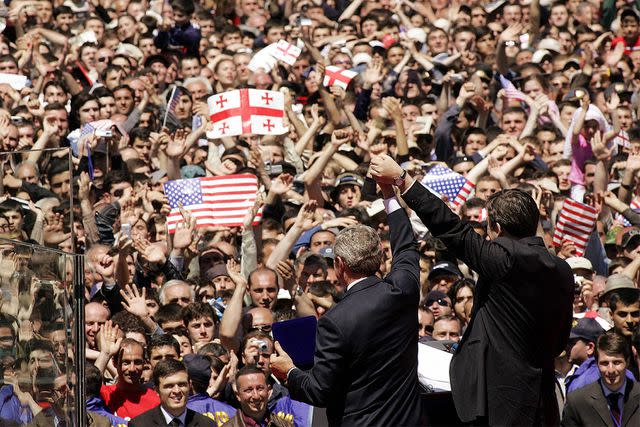
JIM WATSON/AFP via Getty
U.S. President George W. Bush, left, holds the hand of Georgian President Mikhail Saakashvili on May 10, 2005, at the event where someone threw a grenadeWhile making a speech in the country of Georgia on May 10, 2005, a hand grenade was thrown at then-President George W. Bush, landing just 61 feet from where the he, first lady Laura Bush, the Georgian president, the Georgian first lady and other officials sat.
As the FBI archives note, the hand grenade failed to detonate, as a handkerchief wrapped tightly around it "didn’t allow the firing pin to deploy fast enough."
While the man who threw the grenade fled on foot, agents were eventually able to track him down using witness photographs and tracing his DNA from the handkerchief wrapped around the grenade.
The suspect — Vladimir Arutyunian — was ultimately convicted and sentenced to life in prison for the grenade attack and for killing a Georgian police officer who was among the officials who came to arrest him.
In 2008, Bush was again almost attacked — this time by a man who threw a shoe at him during a joint press conference with Iraqi Prime Minister Nouri al-Maliki in Baghdad. In a now-infamous moment, Bush ducked and the shoe missed him, ultimately hitting a flag behind the then-president.
Ronald Reagan, 1981
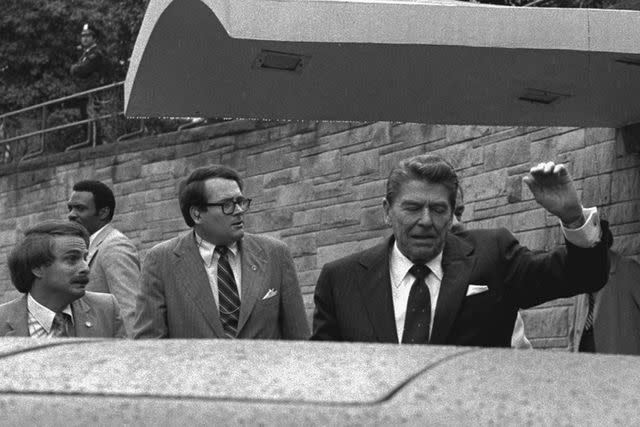
AP Photo/Ron Edmonds
President Ronald Reagan winces and raises his left arm after he's shot by an assailant on March 30, 1981Newly inaugurated President Ronald Reagan was leaving a speech at Washington, D.C.'s Hilton Hotel and walking to his motorcade on March 30, 1981, when John Warnock Hinckley Jr. fired six bullets out of a revolver.
Of those six shots, four struck and wounded people: Reagan's press secretary James Brady; police officer Thomas Delahanty; Secret Service agent Timothy McCarthy, who was shielding Reagan; and Reagan himself, who was struck in the chest. Brady was left with slurred speech and memory issues, and partial paralysis that required the full-time use of a wheelchair following the shooting.
The event would ultimately lead Reagan — a Republican — to call on Congress to enact harsher gun control measures. In 1991, a decade after the shooting, Reagan wrote a New York Times op-ed advocating for the Brady bill, a law that established federal background checks for firearm purchases and created a five-day waiting period.
The attempted assassination was part of Hinckley's bid to impress actress Jodie Foster, whom he did not know but was fixated on. Following a not guilty verdict by reason of insanity and a 34-year hospitalization, Hinckley left Saint Elizabeths Psychiatric Hospital in 2016 — a full-time conditional release that Reagan’s family strongly opposed. In 2022, Hinckley's conditions were removed in compliance with a federal judge's order.
Related: Jodie Foster Says Man Brought Gun to Her College Play After John Hinckley Jr. Assassination Attempt
Gerald Ford, 1975
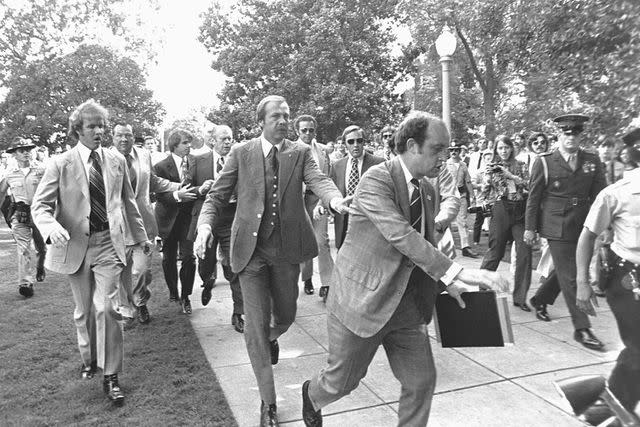
Corbis via Getty
Police and Secret Service agents help President Gerald Ford (seen in the back of frame, left of center) get to safety after an attempted assassination on Sept. 5, 1975Lynette "Squeaky" Fromme — a member of the Manson family cult led by Charles Manson — tried to shoot President Gerald Ford in front of the California State Capitol in Sacramento on Sept. 5, 1975. Fromme had four cartridges in her pistol's magazine but none in the firing chamber, so the gun did not fire.
Two weeks later in San Francisco, Sara Jane Moore — a former FBI informant who had previously been evaluated by the Secret Service — fired a revolver from 40 feet away of Ford and missed the president just narrowly, after bystanders intervened.
Fromme and Moore are the only two women known to have attempted to assassinate an American president in U.S. history.
Franklin Delano Roosevelt, 1933
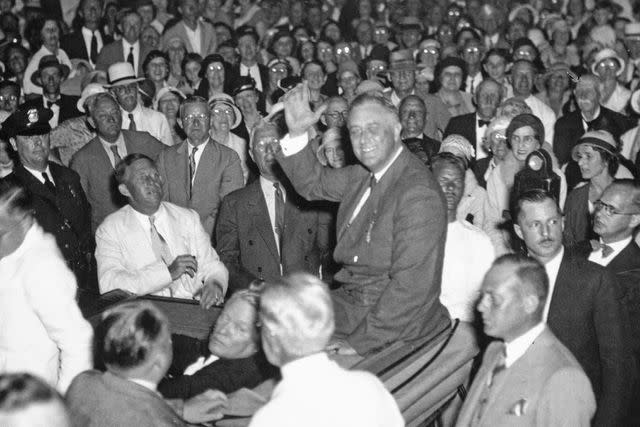
Bettmann Archive
President-elect Franklin D. Roosevelt greets a Miami crowd moments before he's shot atSeventeen days before his first inauguration, President-elect Franklin D. Roosevelt was nearly shot when Giuseppe Zangara fired five shots at him during a trip to deliver a speech in Miami. The shots all missed FDR, but fatally wounded the mayor of Chicago as well as four other people.
Speaking to authorities, Zangara — who was believed to have psychiatric issues — said he fired the shots because his stomach hurt: "Since my stomach hurt I want to make even with the capitalists by kill the president," he reportedly told the FBI.
Related: Donald Trump Joins Short List of Three-Time Presidential Nominees After RNC Roll Call Vote
Theodore Roosevelt, 1912
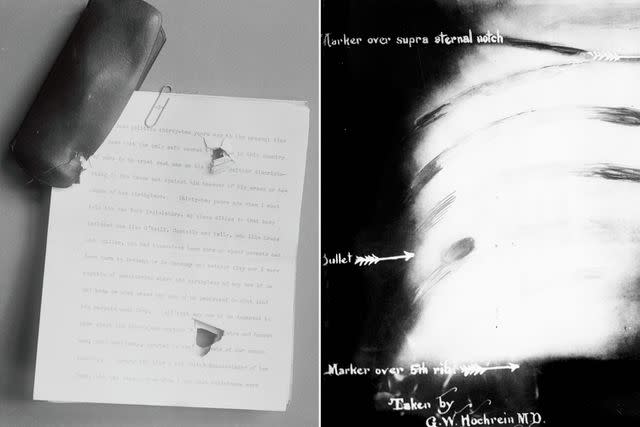
Bettmann Archive; Harlingue/Roger Viollet via Getty
The speech that reportedly saved Teddy Roosevelt's life, along with an X-ray of his chest after the shootingEx-President Theodore Roosevelt — who had decided to seek a third term in office after sitting out of the White House for four years — was on his way to deliver a campaign speech at the Milwaukee Auditorium on Oct. 14, 1912, when he was struck by a bullet. But wearing a stiff overcoat and with his speech folded and nestled in his chest pocket, Roosevelt determined that the bullet hadn't penetrated his lungs, but had been stopped somewhat by the speech itself.
As the History Channel notes, Roosevelt went on to deliver a 90-minute speech that night, only visiting the hospital once he was finished.
"Fortunately I had my manuscript, so you see I was going to make a long speech, and there is a bullet — there is where the bullet went through — and it probably saved me from it going into my heart," he said to the crowd at the time. "The bullet is in me now, so I cannot make a very long speech, but I will try my best.”
Related: Teddy Roosevelt's Teen Descendant Sworn In as D.C.'s Youngest Elected Official
Andrew Jackson, 1835
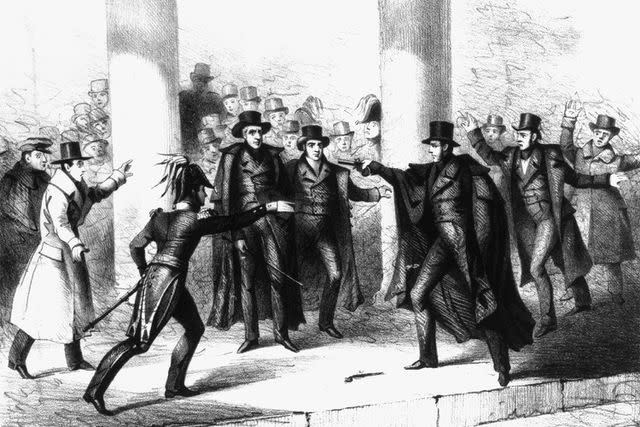
Corbis via Getty
A sketch of Richard Lawrence attempting to shoot President Andrew Jackson outside the U.S. Capitol on Jan. 30, 1835On Jan. 30, 1835, an unemployed former house painter named Richard Lawrence tried to shoot President Andrew Jackson twice in the East Portico of the Capitol, while Jackson was leaving a funeral held in the House of Representatives Chamber.
The attempt failed when both of Lawrence's pistols misfired. Jackson, 67 at the time, responded by clubbing Lawrence with his walking cane.
Lawrence was believed to be mentally ill, but Jackson voiced his own opinion: that his political opponents from the Whig Party had hired him to do the job.
For more People news, make sure to sign up for our newsletter!
Read the original article on People.

